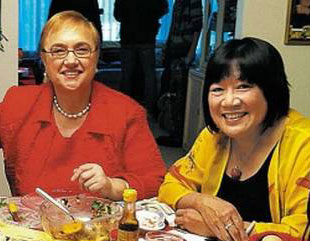Food & Travel Spotlight
Nov. 15: Master Chef Sanjeev Kapoor Hosts 1st Annual Varli Culinary Awards with Co-hosts Manu Narayan and Pooja Kumar in New York
Food & Travel
PBS Special "Lidia Celebrates America" is dedicated to Shirley Fong-Torres
PBS program Lidia Celebrates America: Holiday Tables and Traditions - a Chinese New Year is dedicated to chef, author, and founder of Wok Wiz tours Shirley Fong-Torres who passed away of leukemia after a brief illness in June, 2011.
The program filmed the host, TV chef, author and restauranteur Lidia Bastianich with Shirley Fong-Torres walking through San Francisco's Chinatown and celebrating the Chinese New Year with a dinner at Shirley's home in the San Francisco Bay Area.
It was one of Shirley's last television appearances. Shirley's brother, author and broadaster Ben Fong-Torres also makes an appearance in the program.
Lidia Celebrates America: Holiday Tables and Traditions - a Chinese New Year is the first in a series of specials coming to PBS.
The PBS special featuring Shirley Fong-Torres aired on December 20, 2011 nationally and continues to be broadcast on future television schedules.
Check your local PBS listings for new airing dates of this special.
In Lidia Celebrates America, host Lidia Bastianich embarks on four holiday adventures:
A Mexican-American Christmas Day



